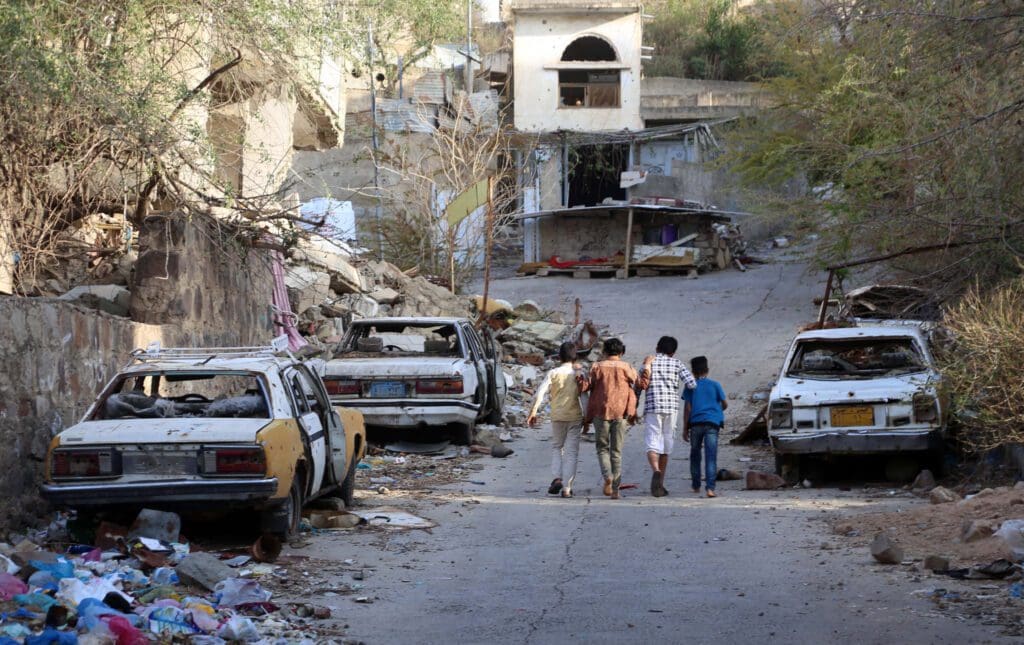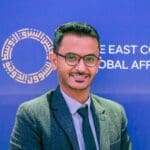The creation of a new governing council for Yemen’s largest province could mark a key moment in the country’s nine-year civil war. The Hadhramout National Council (HNC) was unveiled in late June after meetings between influential actors from across the vast eastern province, as well as Western ambassadors, under Saudi auspices. The council, set to meet formally within two months, will take over administration of the governorate and act as its political representative in talks aimed at reaching a nationwide peace settlement.
Yemen-watchers agree that the council’s formation, nine years into a devastating conflict in the Arab world’s poorest country, is significant. Yet it is far from clear where things are heading. On the one hand, the HNC’s creation could provide a model for a federal system to rule a post-war Yemen. On the other, some fear that the creation of yet another power center, explicitly in opposition to a key southern secessionist force, could trigger yet more fragmentation and undermine the shaky peace that has hung over the country since October.
Southern Secession or Federal
While Yemen’s war was triggered by the northern Houthi rebels’ takeover of the capital Sanaa in 2014, and a subsequent Saudi-led intervention to restore the government to power, a second struggle is underway in the south. The Southern Transitional Council (STC), which seeks to restore southern Yemen’s pre-1990 independence, ousted the government from Aden in April 2020. It had since seized most of Shabwa Governorate in August 2022, and had Hadhramout in its sights until it met with resistance from local forces.
Subsequent attempts by the STC to position itself as the exclusive representative of the south in talks over an end to the war also backfired, pushing its opponents in Hadhramout to unite and form the HNC. These forces believe that Hadhramout would be dominated by the STC in a separate state of South Yemen, and are instead pushing for a strong Hadrami role in a united, federal Yemen.
Several factors give Hadhramout particular clout in Yemeni politics, enabling it both to challenge any over-centralization of power in the country’s western cities of Aden and Sanaa and to stake out its independence from the STC.

Hadhramout is the country’s largest governorate, constituting over a third of Yemen’s land area. It has a long border with Saudi Arabia to the north and a coastline on the Arabian Sea to the south, with rich fishing waters and major ports at Mukalla and Shihr. The province also has two international airports, half of the nation’s oil and significant mineral deposits, resources that are vital for Yemen’s economy.
All this gives Hadhramout a sound basis for asserting its autonomy. But these resources also make it a coveted territory for forces within Yemen and regionally. The UAE and Saudi Arabia, ostensibly allies in the fight against the Houthi rebels in Yemen’s north and west, are engaged in a struggle for dominance in the governorate. Both have sponsored new armed groups there: the Emirati-supported Hadhrami Elite Forces and Saudi-backed Hadhrami Security Brigades. Saudi Arabia has also tried to gain the upper hand by pumping investment into the region, with 20 development projects worth over a $260 million, as well as backing the political autonomy of the HNC.
However, the federal project clashes with the aims of the UAE-backed STC in its effort to restore the independent state of South Yemen (the People’s Democratic Republic of Yemen, PDRY) that existed prior to unification in 1990. The STC believes that Hadhramout must be included if such a breakaway state is to be economically viable.
Thus, since its inception in 2017, the STC has been attempting to persuade Hadhrami forces to join it. The STC leadership has moved to reassure them that a future southern state would be decentralized; the council’s president Aidarous al-Zubaidi has declared his support for the label “Federal Hadhramout.”
Despite these promises, Hadhrami opponents of the STC believe their region would have a greater role in a unified, federal Yemen than in a breakaway southern state. This belief stems from the region’s history. Hadhramout has long served as an influential hub for surrounding areas, maintaining autonomous governance that facilitated its rise as a commercial and political powerhouse with influence extending into the Indian Ocean over the past three centuries. This role began to diminish in 1967 with the establishment of the PDRY, in which power was heavily centralized in Aden.
It was not until the Arab Spring-inspired uprising against President Ali Abdullah Saleh in 2011 that Hadhramout had an opportunity to push for regional autonomy within a federal Yemen. It reiterated these demands during the National Dialogue Conference in 2013, which proposed a federal Yemen comprising six regions, including Hadhramout. The Houthi takeover of the capital Sanaa the following year and the subsequent war put the 2013 agreement on hold—but for Hadhrami federalists, it has remained a benchmark in negotiations.
Fears of Fragmentation
The creation of the HNC therefore brings into sharp relief the struggle between Hadhrami federalists and SNC separatists, laying the way for at least two possible scenarios in Yemen’s complex landscape.
Firstly, the Hadhramout National Council (HNC) could be a step towards a federated Yemen made up of six regions, as per the results of the national dialogue. Rashad al-Alimi, Chairman of the Presidential Leadership Council (PLC)—the central government’s recently-created executive body—welcomed the HNC’s creation and voiced his support for Hadhramout running its own affairs during a visit to the province, suggesting that success there could see the experiment replicated in other governorates.
However, some Yemenis—particularly the STC and the Houthis—fear a second scenario, in which a mushrooming of similar regional administrations would fragment the country further. This could be fueled by the weakness of the central government, the overall lack of a political horizon, and ongoing tensions in governorates including Al-Mahra, Marib and Shabwa.
This argument was made by PLC member Faraj al-Bahsani, a former Hadhramout governor who is also a deputy president of the STC. He warned after the HNC’s creation that “the multitude of projects, visions, and the acts of exclusion will only result in further fragmentation, something we Yemenis can ill afford.”
The Houthis, for their part, also believe that such regionalist projects would threaten their own interests. From their perspective, the existence of two regions in the south—Hadhramout and Aden—could also fragment the north, reducing Houthi dominance and confining them to the governorates they already control. In contrast, the Houthis hope that the south breaking away entirely would allow them to take control of the whole of the north.
It is also worth pointing out that the HNC is the country’s fourth political council to be set up since the Saudi-led intervention, following the Houthi-led Supreme Political Council in 2016, the STC in 2017, and the PLC established in Riyadh last year. This adds another element to an already complicated political landscape.
It is possible that the HNC will have limited political impact at the national level. Its reach could be restricted to local governance, improving services and providing security within the governorate. The Marib and Shabwa governorates have also had relative autonomy over the course of the war without any effect on the structure of the state.
For the moment therefore, Yemen persists in a state of neither peace nor war. Only a settlement on the nature of the state—whether centralized, federal, or two separate entities—will lead to a viable, comprehensive peace. And clarity over that remains some way off.
The opinions expressed in this article are those of the author and do not necessarily reflect the views of the Middle East Council on Global Affairs.


